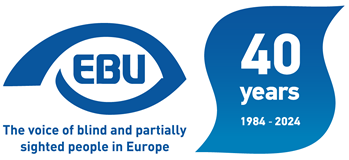Several NGOs commemorated the 70th birthday of his pantheonization through a moving tribute
Paris, 22nd June 2022 – L’Institut National des Jeunes Aveugles (INJA) and the Confédération pour la Promotion Sociale des Aveugles et Amblyopes (CFPSAA) organized an homage to celebrate the induction of Louis Braille to the Panthéon 70 years ago. This commemorative act was also supported by other associations like la Fédération des Aveugles et Amblyopes de France (FAF), apiDV, Valentin Haüy or Voir Ensemble. The European Blind Union (EBU) participated in the commemorations to underline the international dimension that the invention of Louis Braille has for millions of blind and partially sighted people across Europe and around the world.
Braille’s contribution to the improvement of visually impaired people’s lives, as well as the impact of his work within the scientific community, were some of the main issues that were addressed by the hosts. During a seminar hosted by INJA, its director Stéphane Gaillard stated “Louis Braille’s work must be remembered so we can carry on with his legacy”. While discussing the current concerns for visually impaired people, the organizers added that “issues like publishing books in Braille, labelling or web accessibility are some of the main priorities in our agendas.”
Additionally, the Panthéon hosted an homage ceremony with musical performances. During a round of speeches, France’ Solidarity, Autonomy and People with Disabilities Minister, Mr. Damien Abad, emphasized that “the revolutionary code he developed has improved the inclusion in daily life of people with visual impairment”. Furthermore, the hosts paid a final tribute to Louis Braille within the Panthéon’s crypt.
About Louis Braille
Born in Coupvray (France) in 1809, Louis Braille is undoubtedly one of the pioneers in the improvement of visually impaired people’s lives. Since losing his eyesight at the age of three, he developed a strong interest in creating a communication system for those within the beforementioned collective.
While studying in the Royal Institute for Blind Youth in Paris, Braille started working on his future code, thus publishing its first version in 1829. Since then, the use of this revolutionary tool has been extended and adapted according to the different aspects of technological progress.

